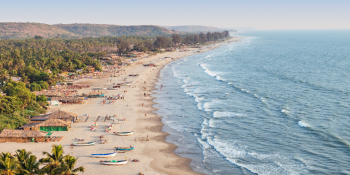Winter treks offer breathtaking landscapes, snow-covered peaks, and serene solitude. However, this season also presents unique challenges in minimizing our environmental impact. Practicing the Leave No Trace (LNT) principles during winter trekking ensures that these pristine areas remain unspoiled for future generations. Here are some essential tips to follow while trekking in snowy and icy conditions.
1. Plan Ahead and Prepare
Proper planning is key to minimizing your environmental footprint. Research the trail conditions, weather forecasts, and camping regulations before you head out. In winter, certain areas might be more vulnerable due to freezing conditions or fragile ecosystems. Make sure your equipment and clothing are suitable for cold-weather trekking, helping you avoid unnecessary disruptions during your hike. Understanding the terrain and the specific challenges of winter conditions will help you stay safe and leave minimal impact.
2. Stick to Established Trails and Campsites
In winter, snow can obscure natural pathways, and it’s tempting to take shortcuts or forge new trails. However, this can cause damage to fragile habitats. Always stick to established trails, and if you’re camping, use designated campsites. Avoid disturbing snow-covered vegetation, as plants and mosses can take years to recover from being trampled.
3. Pack Out All Trash
The cold weather often means that waste such as food scraps, tissues, and hygiene products take longer to decompose. Always carry a trash bag to pack out everything you bring in, including biodegradable materials that can be harmful in the long term. Some areas may require you to pack out human waste using a portable toilet or bag. Ensure that you dispose of all waste properly to keep the environment clean and healthy.
4. Use Environmentally Friendly Gear and Products
During winter treks, it’s essential to choose environmentally friendly products, such as biodegradable soap, eco-friendly fuel, and reusable containers. Avoid single-use plastics, as they don’t degrade in cold weather. When choosing gear, opt for durable, high-quality items that will last longer and contribute less waste over time. Be mindful of the materials your clothing and equipment are made from, as they can affect the environment.
5. Minimize Campfire Impact
In winter, the temptation to build a fire for warmth is strong. However, many winter trekking areas have strict regulations against campfires to protect delicate ecosystems. Even where allowed, be mindful of how you gather firewood. Use dead and downed wood, and avoid cutting trees. When possible, use a camp stove for cooking and warmth, as this leaves less of a mark on the environment.
6. Respect Wildlife
Winter is a tough time for wildlife, so respect animals’ natural behaviors. Stay a safe distance from animals and avoid feeding them, as this can alter their natural diet and behavior. Make sure your food is stored properly to prevent attracting animals to your campsite. By minimizing your interaction with wildlife, you help preserve their natural habitat.
7. Leave Nature as You Found It
The most important principle of Leave No Trace is to leave nature as you found it. In winter, this includes not disturbing snow formations, animal tracks, or any other features that add to the landscape’s beauty. Avoid breaking branches or engaging in any activity that alters the natural environment.
By following these Leave No Trace principles, winter trekkers can ensure that their journeys leave only footprints in the snow. At Toliday Trip, we encourage responsible travel practices to preserve the beauty of nature for all who follow. Let’s take care of our environment while enjoying the wonders of winter trekking!









